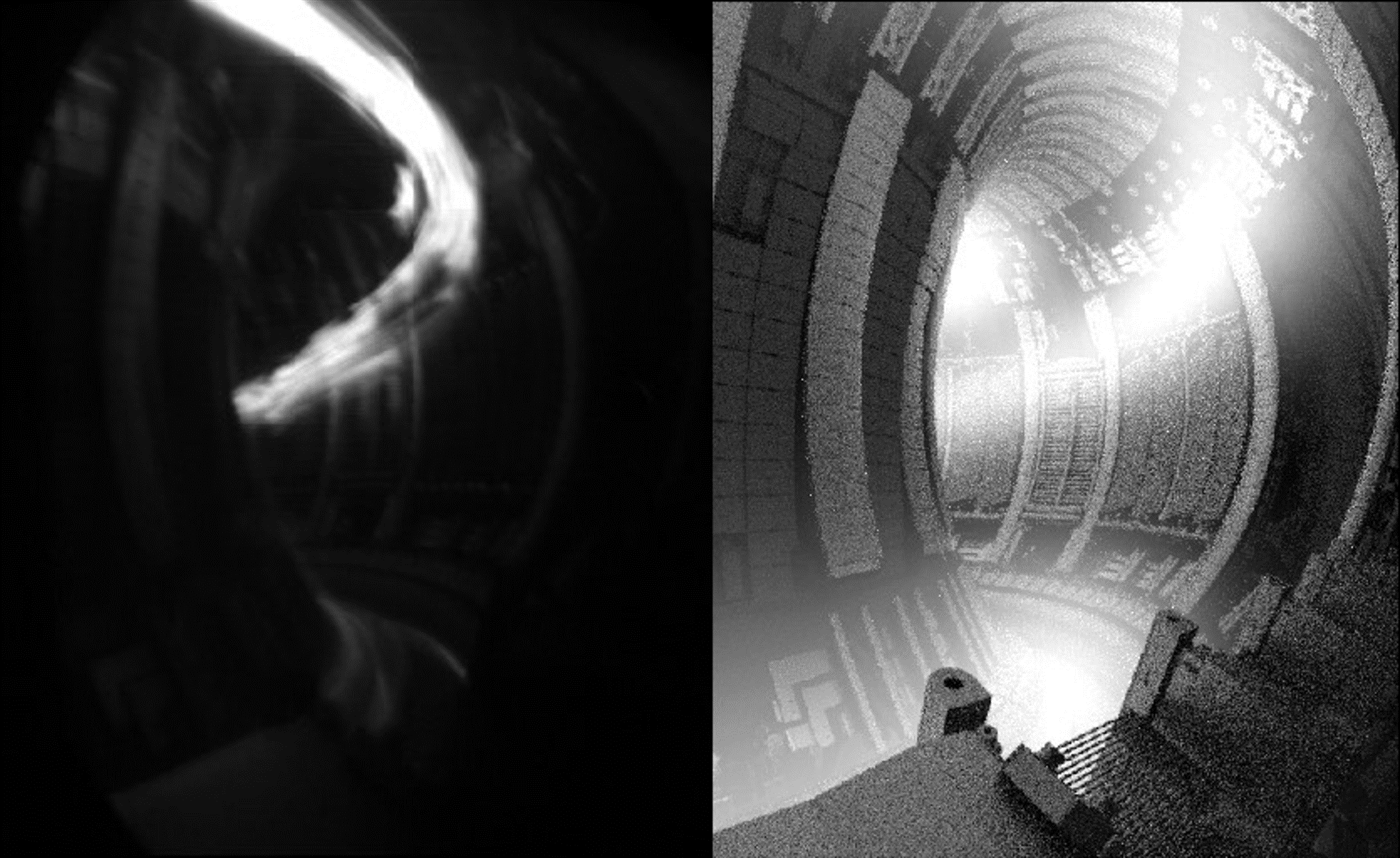This project involved the development of an algorithm to model disruption radiation in three dimensions (Emis3D), to more accurately measure and predict disruption mitigation efficacy.
In a tokamak disruption, the magnetically confined plasma escapes confinement. Its stored energy is rapidly released and deposited on nearby machine components, and can cause melting or mechanical damage. One way to prevent or reduce this damage is to inject impurities, often noble gasses like neon or argon, into the plasma before it disrupts. Impurities absorb energy from the plasma and emit it as evenly distributed visible or ultraviolet radiation, which is less damaging than the concentrated energy deposition that occurs in unmitigated disruptions.
Impurity radiation in mitigated disruptions can be detected and measured by sensors called bolometers. Each bolometer detects broad spectrum radiation emitted along a linear chord of the plasma. Data from large arrays of individual sensors are combined to reconstruct and map the spatial distribution of radiation emitted from the plasma and determine the total energy released through mitigation. Radiation reconstruction is typically limited to two dimensions or fewer by the limited spatial distribution of radiation sensors; the radiation distribution is assumed to be symmetrical along the toroidal direction of the tokamak. However, disruption radiation is three-dimensional and not toroidally symmetric, due to the 3D plasma instabilities that cause disruptions, and due to localized radiation from injected impurities.
To better evaluate 3D radiation distributions in disruptions, the disruptions group developed Emis3D, a radiation analysis tool that uses reduced \chi^2 statistics and a modified guess-and-check algorithm to match a synthetic radiation structure (image right) to experimental disruption radiation (image left). The images are from a shattered pellet injection (SPI)-mitigated disruption on JET [NF 64 (2024)]. The forward modeling approach implemented in Emis3D is not limited to axisymmetric radiation structures, and can be used to quantize the uncertainty in total radiated energy associated with variations in the radiation distribution. Emis3D was first implemented on JET, where it was used to demonstrate that thermal mitigation is more effective than previously thought due to a newly quantified impurity injection plume peaking effect [PoP 32 (2025)].

The primary investigation in this project has concluded, and is presented in Ben’s doctoral thesis, which will appear on MIT DSpace (https://dspace.mit.edu/). However Emis3D continues to be used as an analysis tool on JET, as well as other tokamaks, including SPARC, DIII-D, and ASDEX-Upgrade. On SPARC, Emis3D has been used as a design tool to evaluate the layout of the planned disruption bolometry system, and determine that it is sufficient to accurately measure radiated energy during several stages of a full power SPARC disruption to within the desired uncertainty of 10%.
The Emis3D team is led by Ben Stein-Lubrano (MIT Physics), now a postdoctoral associate in the PSFC disruptions group. He collaborated on the JET component of this project with Ryan Sweeney (CFS), and with members of the JET and JOREK teams. Emis3D collaborators on other tokamaks include Rebecca Li (CFS), Jacob Rabinowitz (Columbia University), Jeffrey Herfindal (ORNL), and Jakub Chlum (IPP CAS). Ben’s supervisors for this project were Dr. Robert Granetz and Dr. Earl Marmar.